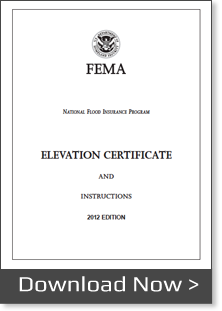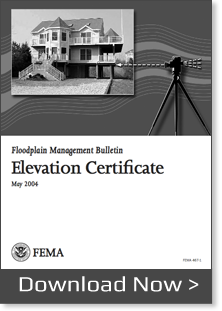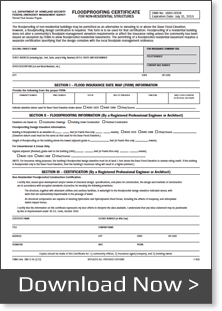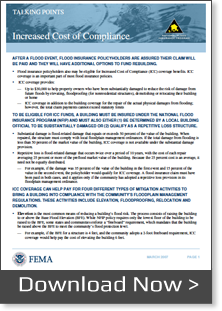NFIP Flood Insurance Requirements
The following provides a brief overview and links to critical forms and guidelines relating to NFIP flood insurance requirements and alternatives.
How To Meet The NFIP Flood Insurance Requirements
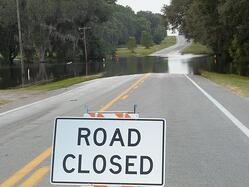 |
| Tropical Storm Debbie. FEMA news photo. |
The floodproofing of non-residential buildings may be permitted as an alternative to elevating to or above the Base Flood Elevation. To qualify for NFIP insurance for non-residential buildings, FEMA requires an Elevation Certificate and a Floodproofing Certificate completed by a qualified engineer:
The Elevation Certificate
The Elevation Certificate is used to certify building elevations and is required in order to properly rate Post-FIRM buildings, which are buildings constructed after publication of the Flood Insurance Rate Map (FIRM), located in flood insurance Zones A1–A30, AE, AH, A (with BFE), VE, V1–V30, V (with BFE), AR, AR/A, AR/AE, AR/A1–A30, AR/AH, and AR/AO. The Elevation Certificate is not required for Pre-FIRM buildings unless the building is being rated under the optional Post-FIRM flood insurance rules.
As part of the agreement for making flood insurance available in a community, the NFIP flood insurance requirements require the community to adopt floodplain management regulations that specify minimum requirements for reducing flood losses. One such requirement is for the community to obtain the elevation of the lowest floor (including basement) of all new and substantially improved buildings, and maintain a record of such information. The Elevation Certificate provides a way for a community to document compliance with the community’s floodplain management ordinance.
Additional Information on the Elevation Certificate is included in the Elevation Certificate Bulletin 467.
FEMA Floodproofing Certificate
For both non-residential buildings and residential floodproofed basements in communities that have been granted an exception by FEMA, a floodproofing certificate is required.
Under NFIP flood insurance requirements, nonresidential buildings can be floodproofed up to or above the Base Flood Elevation (BFE). A floodproofed building is a building that has been designed and constructed to be watertight (substantially impermeable to floodwaters) below the BFE.
Floodproofing of residential buildings is not permitted under the NFIP unless FEMA has granted the community an exception for residential floodproofed basements. The community must adopt standards for design and construction of floodproofed basements before FEMA will grant a basement exception.
NFIP Dollars May be Available for Floodproofing
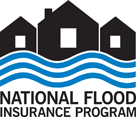 Flood insurance policyholders may be eligible for Increased Cost of Compliance (ICC) coverage benefits. ICC coverage is an important part of most flood insurance policies.
Flood insurance policyholders may be eligible for Increased Cost of Compliance (ICC) coverage benefits. ICC coverage is an important part of most flood insurance policies.
ICC coverage provides up to $30,000 to help property owners who have been substantially damaged to reduce the risk of damage from future floods by elevating, floodproofing (for nonresidential structures), demolishing or relocating their building or home.
ICC coverage is in addition to the building coverage for the repair of the actual physical damages from flooding; however, the total claim payments cannot exceed statutory limits.
Alternative Coverage to NFIP Insurance
In many cases, larger commercial properties can lower their flood insurance costs by qualifying for Highly Protected Risk (HPR) coverage by HPR insurers such as FM Global. Read more about HPR insurance


